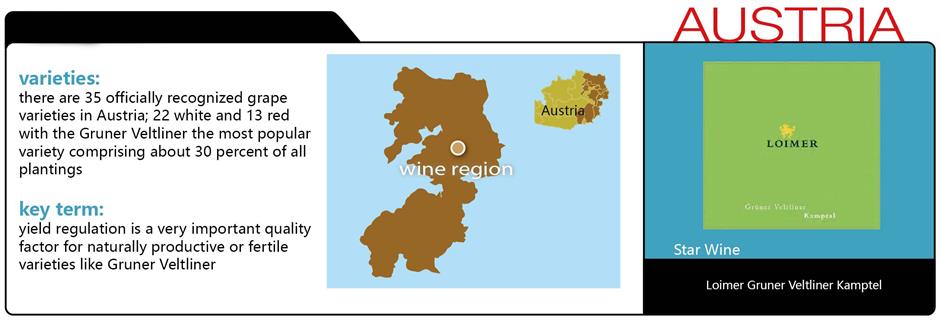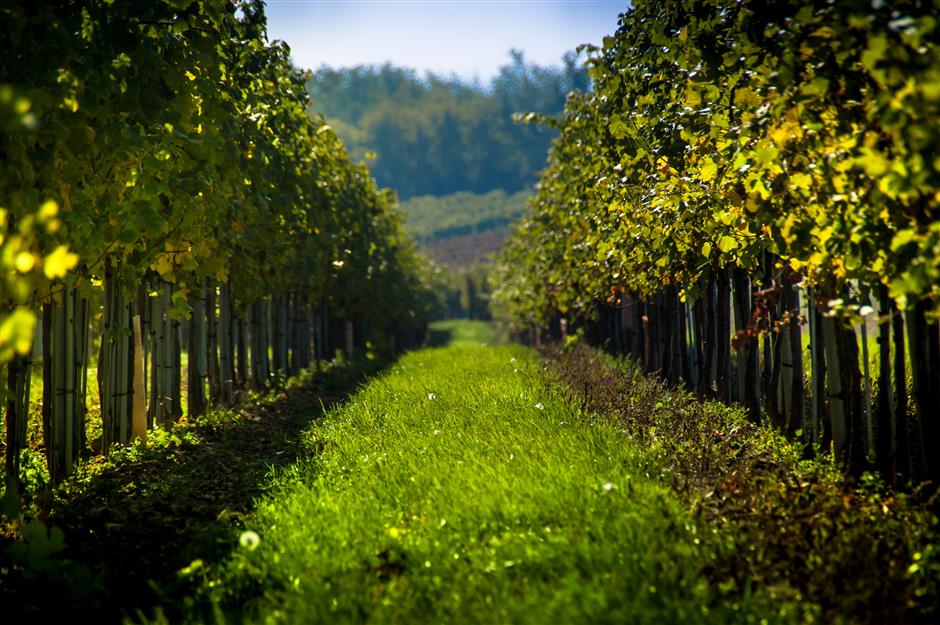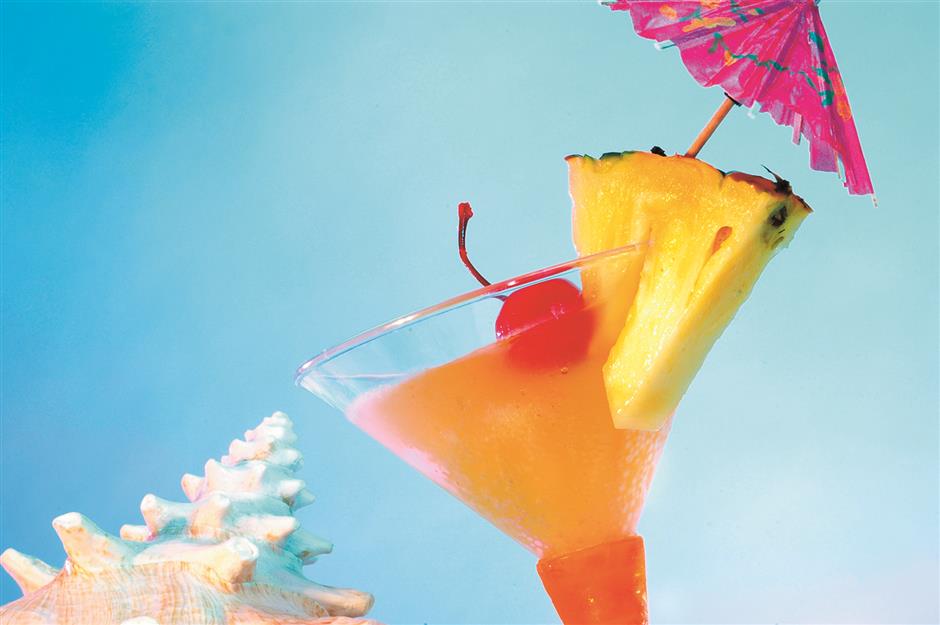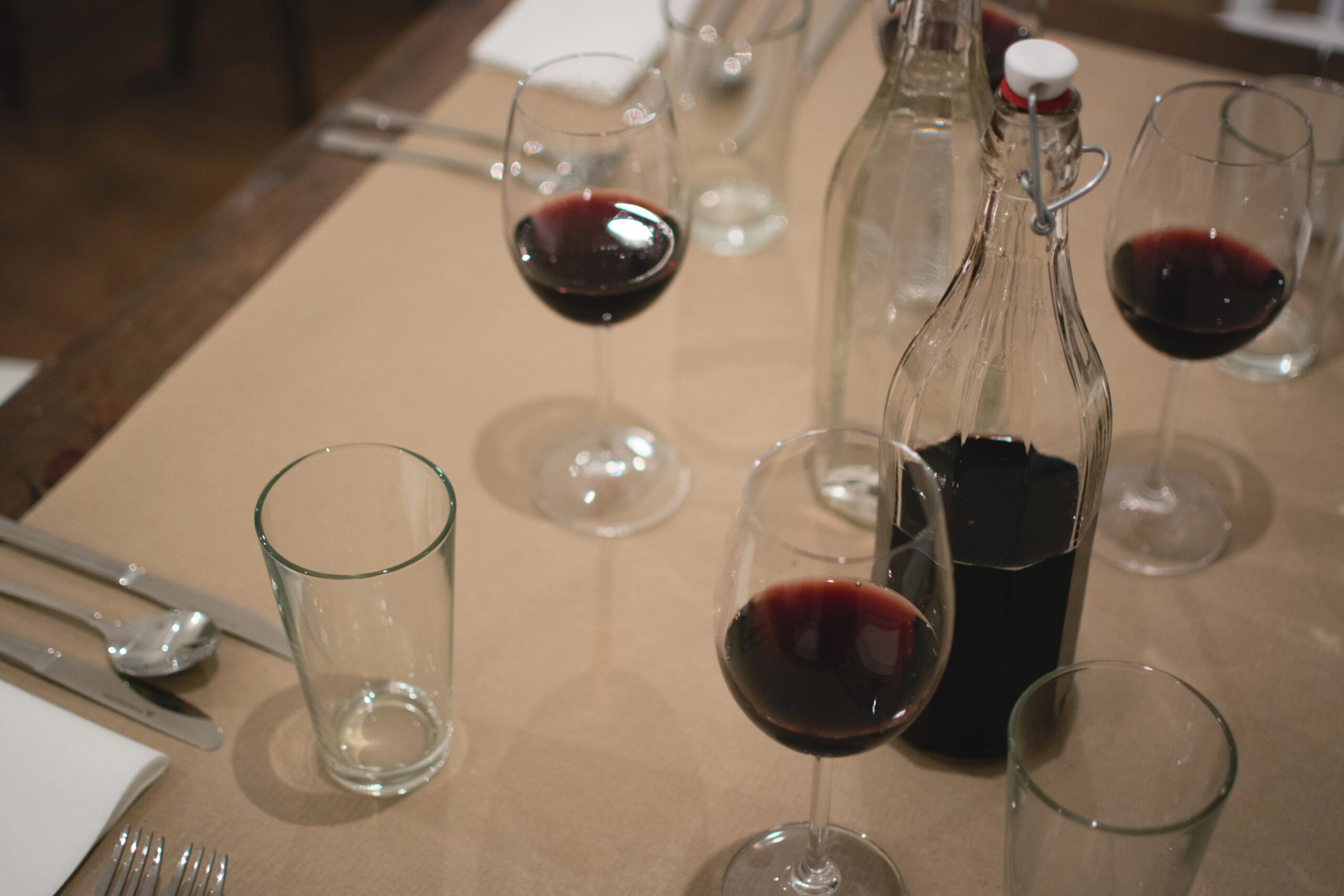Summary
Today’s absorbing iDEAL feature article by Li Anlan probes into the intricate world of Chinese cuisine ingredients. Ingredients for wines are grapes. Therefore, I thought it appropriate to write about two remarkably distinctive white wine varieties that readers might not, but definitely ought to know. Both also happen to be wonderful companions to many of China’s most popular dishes.
There’s nothing wrong with imbibing liberal quantities of the ubiquitous Chardonnay and Sauvignon Blanc whites but as a true wine lover, sooner or later you’ll develop a yen for something different. Inevitably experienced palates crave diversity and in the world of white wines there are plenty of options. One of the best comes from Austria, the European country with no kangaroos.
Gruner Veltliner
Austria may not be the first country you think about when considering wines, but wines have been made here for nearly three millenniums. The Celts or perhaps even their predecessors, the Illyrians, were likely the first to make wines from wild vines. A century before the birth of Christ, the colonizing Romans planted vines in many parts of modern day Austria.
While certainly no giant in terms of wine production quantity, Austria stands tall in terms of quality. Similar to New Zealand and markedly dissimilar to most producing nations, it’s awfully hard to find a bad Austrian wine. The average quality of wines produced in Austria exceeds that of neighboring larger wine producing nations.
The special climates of the Austrian wine regions favorably influence the quality of the wines. Regional variances exist but in general a confluence of cool winds from the north, warm Pannonian influences and temperate Mediterranean effects helps grapes ripen nicely while still retaining good acidity.
For a small country Austria boasts a wide range of variety and wine styles.
There are 16 specific wine-growing areas, including nine specific DAC (Districtus Austriae Controllatus) regions that features a clear focus with representative signature grapes. In all, there are 35 officially recognized grape varieties of which 22 are white. The most important by far is Gruner Veltliner.
I’ve been a fan of Gruner Veltliner wines from Austria for many years but a trip last year helped me build more understanding and intimacy with the grape and appreciation for the wines it makes. I’m certainly not alone. Wine professionals and accomplished amateurs are increasingly singing the praises of Gruner Veltliner wines. There are good reasons why wine aficionados in China should jump on board.
Quite understandably representatives of wine regions around the world come to China and make great efforts to show that their wines match well with Chinese dishes.
The sheer diversity of ingredients and foods included in the eight regional styles of Chinese cuisine mean that they are in some cases correct. But this doesn’t mean that the wines go well with many styles of Chinese cooking. Gruner Veltliner does.
What makes Gruner Veltliner one of my favorite go-to wines for Chinese cuisines? Basically, the exuberant fresh citrus flavors, minerality and spicy nature of Gruner Veltliner wines make them exceedingly synergistic with many Chinese dishes.
Intriguing notes of white pepper that are commonly found in the wines also work well with dishes featuring some spice.
Gruner Veltliner wines pair exceptionally well with prevalent Chinese dishes, such as pork, fish, shellfish, greens and starches often served together. Unfortunately, the availability of Gruner Veltliner wines is limited in our fair city but some fine producers like Loimer, Loire Lois, Wieninger and Nigl can be found. They are well worth the effort.

Insolia
Insolia or Inzolia or even Ansonia as it is referred to in southern Tuscany is a native Sicilian white variety that, until recently, was used to make mostly indifferent and insipid wines. Famous as an ingredient for the Marsala fortified wines, basic Insolia whites for most of the past 100 years were considered at best, daily quaffers.
The major challenges that held back Sicilian wines were high temperatures and lack of modern winemaking equipment. Throughout the winemaking process excessive heat and exposure to oxygen would damage the delicate white grapes and result in slightly oxidized or baked wines that lacked freshness and elegance. Over the past two or three decades new investment in technology and modern winemaking have drastically improved the quality and reputation of Sicilian wines, including Insolia.
Today the better examples of Insolia wines are deliciously citrusy, nutty and herbal, often with hints of almonds. Because of their freshness, these white wines with Sicilian typicity are lovely with a host of Chinese dishes, including many Shanghai seafood favorites like river eel in brown sauce and roasted cod head with scallions. In Shanghai, you can find very representative, well-made Insolia wines from Tasca d’Almerita and Planeta.
Whether your next feast of Chinese ingredients feature bottles of Gruner Veltliner or Insolia, remember to serve both wines well-chilled or about 8 degrees Celsius in order to accentuate their fresh and lively characters.
Where to buy in Shanghai:
www.thewinerepublic.com (website)
Loimer Gruner Veltliner Kamptel
Loire Lois Gruner Veltliner
Wieninger Vienna Hills Gruner Veltliner
Nigl Gruner Veltliner Freiheit
Atto Primo, 2Fl. 20 Guangdong Rd, 6328.0271
Tosca d’Almerita Nozze d’Oro (Insolia blend)
Tosca d’Almerita Regaleali Bianco (Insolia blend)





